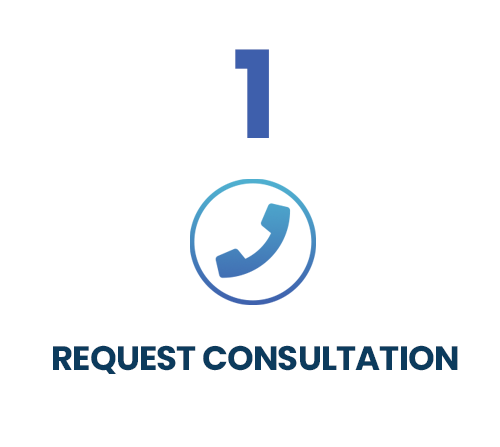As an attorney, establishing a positive reputation on Google and Avvo is crucial for remaining competitive in your local market. If you have no reviews — or worse, negative reviews — you’re going to have a hard time capturing prospective clients who base all of their decisions on online reviews. That’s why we’re going to show you how to deal with negative reviews and protect your online reputation.
How Damaging Are Negative Reviews?
If you’ve ever received a negative review after serving a client, you understand how disheartening it can be to learn that your best efforts weren’t enough to garner positive feedback. Unfortunately, reviewers don’t always treat lawyers fairly, and there’s evidence to back it up. Clients that have a negative experience are ten times more likely to leave a review than those who had a positive experience.
Let’s run the numbers: if only one out of every ten positive experiences results in a positive review, and you receive a single one-star review, it could take up to 40 positive client experiences to offset your bad review. That’s a lot of work to overcome one negative opinion! And if you get targeted by review spam, you’re going to need more than luck to dig yourself out of the review badlands. This is part of the reason why law firm reputation management is so critical for lawyers that want to grow their practice.
Should You Manage Your Own Reviews?
Before you decide to manage your own reviews, you might want to consider how well you handle criticism. Many lawyers make the mistake of attempting to respond to reviews themselves. Despite their best efforts to remain professional, everyone has a boiling point, and you might later regret the response you penned in the heat of the moment. Negative reviews can attack more than your legal services. Reviewers might attack your character, insult your practice, and question your integrity; when this happens, you need to detach yourself from these critiques to maintain a high level of professionalism.
“Sometimes, facilitating some separation between yourself and your critics by allowing a third-party to manage your reviews is the best way to ensure that your responses are helpful, cordial, without emotion, and most of all, professional.”
If you do attempt to take on this task alone, you should always picture your reply attached to a bar counsel complaint. In this situation, would you be confident in the way you opted to handle your reply? Was your tone and content appropriate? Sometimes, facilitating some separation between yourself and your critics by allowing a third-party to manage your reviews is the best way to ensure that your responses are helpful, cordial, without emotion, and most of all, professional.
How to Address a Negative Review
You never want to be seen responding to client reviews in a manner that can be viewed as insulting, aggressive, or unprofessional; after all, your reviews and replies are public. Try to abide by the community guidelines of Avvo or other comparable sites whenever you respond to a negative review. For instance, Avvo’s community guidelines recommend that lawyers, avoid excessive self-promotion, draft original responses, and answer questions while maintaining client anonymity, among other things.
Appropriate Response to a Negative Review
Here’s a good example of a response to a negative review that doesn’t disclose confidential or attorney-client privileged information: “Thank you for the feedback. It is our goal to serve every client’s legal needs. We are always looking to improve our services for our clients. Please contact our office at XXX-XXX-XXXX with any questions or concerns you may have.”
As you can see, this review didn’t “take the bait,” instead, it accepted the feedback and made a deliberate attempt to take the conversation offline. This is one of the fundamental principles of review management: Always take the conversation offline.
Inappropriate Response to a Negative Review
Now, let’s cover an unacceptable response to a negative review: “Thank you for the feedback. I’m personally sorry that I couldn’t get your husband’s DUI reduced to a reckless driving charge. However, there’s only so much that can be done when a DUI results in over $25,000 in property damage. As we discussed in our initial meeting, Mr. Smith’s criminal record played a significant role in the judge’s decision. I hope this justification is sufficient enough for you to remove this review.”
This response divulges too many details about the client’s case. Furthermore, it references past discussions that were conducted under attorney-client privilege. There’s more to be lost than gained here, so it’s better to tone it down.
Alternative Response to a Negative Review
If you absolutely have to get the last word, consider a response such as this: “Unfortunately, in your particular case the law didn’t support your suggested argument or strategy, we had to pivot in order to give you the best chance of achieving the best result possible.”
There’s some merit to responses like this. For one, you prove that you aren’t willing to fold, which is a great attribute for many attorneys. These types of replies also help you dismiss the negative review. However, you need to cut off communication after you leave a reply. You don’t have the time to be corresponding with past clients when your new clients need you.
Are You Having Trouble Keeping Up With Reviews?
Whether you’re unsure of how to respond or don’t have the time to engage every review, it’s important to realize that proper review responses can help you maintain relationships, attract new clients, and grow your practice.
At LEVERAGE, our reputation management services are designed to work in tandem with your SEO and social media marketing to ensure that your prominent online visibility is enhanced with an excellent online reputation. When you consult LEVERAGE for lawyer reputation management, your law firm’s reputation will soar with a comprehensive strategy that combines reviews management, solicitation, aggregation, and more. Best of all, you’ll no longer have to worry whether or not the time you spend managing reviews is paying dividends for your practice. Our experienced team puts in the necessary legwork to support your brand and position your firm as a responsive and respectable legal partner.
READY TO PARTNER WITH AN AWARD-WINNING AGENCY THAT DELIVERS RESULTS? LET’S GET STARTED.













